Structural pellets in the pigsty
The pig has more in common with us humans than we may realise. Because it also likes warm and dry “bedding”, is curious and wants to be kept busy. Pig farmers are increasingly using structural pellets to promote animal welfare. This is because they can be used not only as litter and manipulable material, but also specifically as forage.
Special requirements for pigs
Thanks to their extremely high absorbency, structural pellets are ideal for use as litter material. In doing so, they not only absorb the moisture in the pigsty so that the pigs are dry when they stand or lie down. In addition, the pellets bind the ammonia present in the pigsty air and therefore improve the climate in the pigsty. Compared to straw chaff, only about half of litter material is required. This also reduces the amount of manure produced and the storage capacity it requires. The pigs’ innate exploratory behaviour is also satisfied by the provision of structural pellets. As a manipulable material, it distracts the animals from biting their tails and therefore also promotes animal welfare. Especially for lactating sows it is welcome forage.
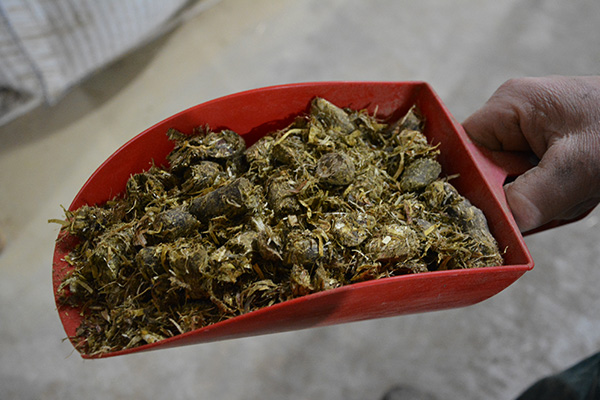
As germ-free and raw fibre-rich roughage, it increases the volume of their gastrointestinal tract and therefore increases their forage intake capacity. At the same time, it promotes the feeling of satiety which in turn helps to calm the animals.
Advantages of structural pellets for pigs
- Litter for different types of sheds
- Low straw requirement
- Less manure production
- Low storage space requirement
- Optimum binding of moisture and ammonia
- Ideal as a manipulable material for animal welfare
- Reduced tail biting

Josef Oelgemöller, Farmer
Structural pellets in pig farming
“Especially by dealing with the straw pellets we can significantly reduce tail biting and losses caused by it. This is very important for us, as we now raise our pigs with long tails.”
Pigs feel "super comfortable" here
The aspect of “animal welfare” is high on the agenda of the Oelgemöller family. From housing to forage, the pig farmers from Recke in Münsterland take every opportunity to ensure that the animals feel comfortable there. “In our open pigsty, the pigs have plenty of space, light and fresh air. Thanks to ample outdoor space, straw-based litter and natural manipulable material, we create ideal conditions for keeping the animals in a manner appropriate to their species,” explains Josef Oelgemöller. After the old conventional pigsty burnt down three years ago, the farm also developed a new strategy with the newly built open pigsty. “We have reduced the number of sows in the closed system from 150 to 55 and have deliberately opted for a housing system with minimal litter in which structural pellets produced from straw play a central role. According to the motto “class instead of mass”, we use this method to produce quality meat which a butcher from Münsterland markets under the label “Meisterfleisch – fair und nachhaltig”
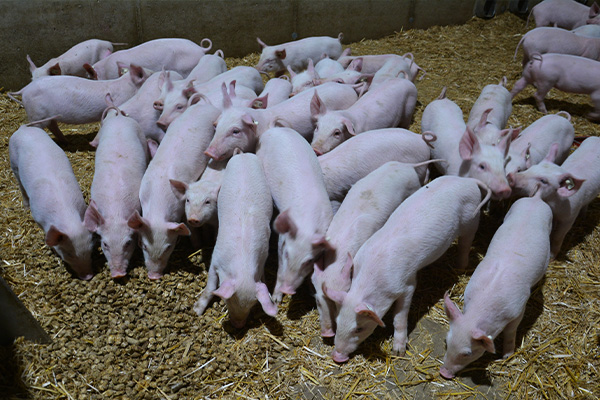
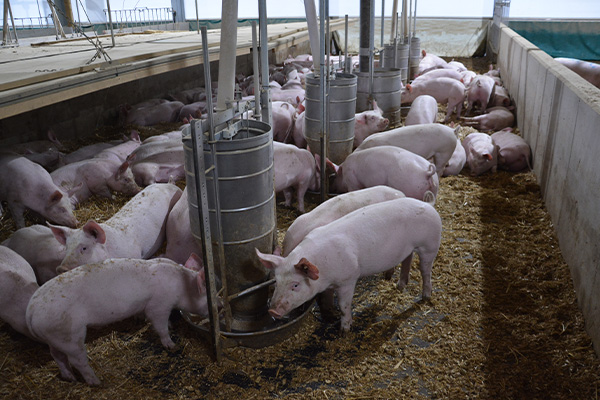
All in the spirit of animal welfare
The new open pigsty offers 360 places for piglets and 630 places for fattening. After weaning from the sow, the piglets are placed in one of the approximately 50 m2 piglet pens, including the exercise area. The partially heatable floor is littered with straw for housing the pigs in the almost 30 m2 feeding and lying area. “When we restock, we throw about 10 kg of only slightly chopped straw from a square bale and also 10 kg of straw pellets from a bucket into the pigsty. The piglets immediately start rummaging in the straw and nibbling on the straw pellets. In the process, they gradually distribute the littered material in the pigsty,” explains Oelgemöller. The structural pellets in particular, but also the long straw, initially serve as manipulable material for the pigs and promote their natural exploratory behaviour. As such, they meet the requirements of the German Animal Welfare Ordinance (TierSchNutzV) and the Animal Welfare Initiative. According to these requirements, all pigs must be provided with sufficient organic fibre-rich material at all times. “Especially by dealing with the straw pellets we can significantly reduce tail biting and losses caused by it. This is very important for us, as we now raise our pigs with long tails.”
Good for the gut and the climate
“And to prevent the animals from losing their appetite for nibbling, we also give them a shovelful of alfalfa pellets and hay pellets or maize silage every now and then for a change,” adds the farmer, pointing out that all the structural pellets used are free of harmful mycotoxins thanks to the heat treatment during production and are therefore hygienically impeccable as supplementary forage. As he read recently in a journal, the fibre contained in the pellets provides food for the microbes in the large intestine. This promotes intestinal health and boosts the immune system. The extra feeding time keeps the pigs busy and calm for longer. “According to experts, there is also a shift in nitrogen excretion due to increased microbial activity in the colon. The idea is that less nitrogen will end up in the urine and instead more in the faeces where it will volatilise considerably less in the form of ammonia. This is easy for us to understand because ammonia emissions inside and outside the pigsty have been minimised compared to before,” confirms Oelgemöller.
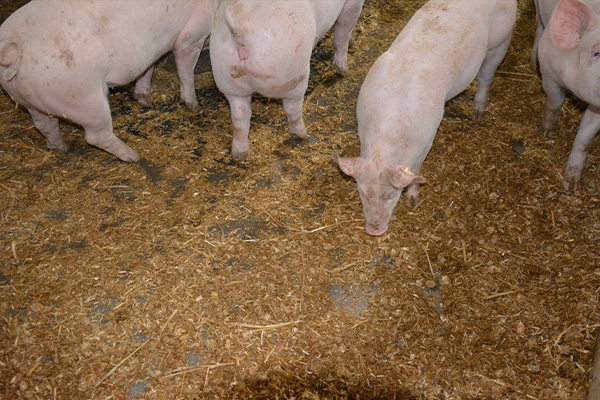
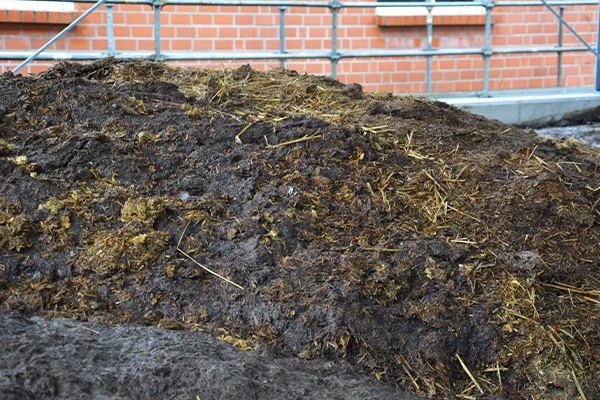
Saves material and facilitates work
Of course, straw is also indispensable for the Oelgemöller’s in its function as litter material. “Thanks to their coarse structure, the straw pellets have tremendous absorbency and absorb considerably more moisture from the pigsty floor than straw. As long as the pellets have not yet been crushed by the pigs and softened by absorbing moisture, they initially form a hard and therefore rather uncomfortable surface to lie on. Therefore, we use a combination of straw pellets and loose straw to litter the pens,” explains the pig farmer. As with the piglets, the pens of the older fattening pigs are also littered with straw pellets and loose straw. Wet litter material must be removed daily and replaced with dry straw. “In this regard, the straw pellets offer great advantages over the straw chaff. This is because litter with structural pellets requires only about half as much material than when using straw from bales. Of course, the same applies to the amount of manure to be removed. The manure with straw pellets is not as wet and is much shorter than manure with straw. And as both littering and mucking out require a great deal of manual labour, the straw pellets also prove to be very advantageous in terms of labour management,” states Oelgemöller.
Contact
Do you have any further questions and would like to contact us? The contact form is the easiest way.